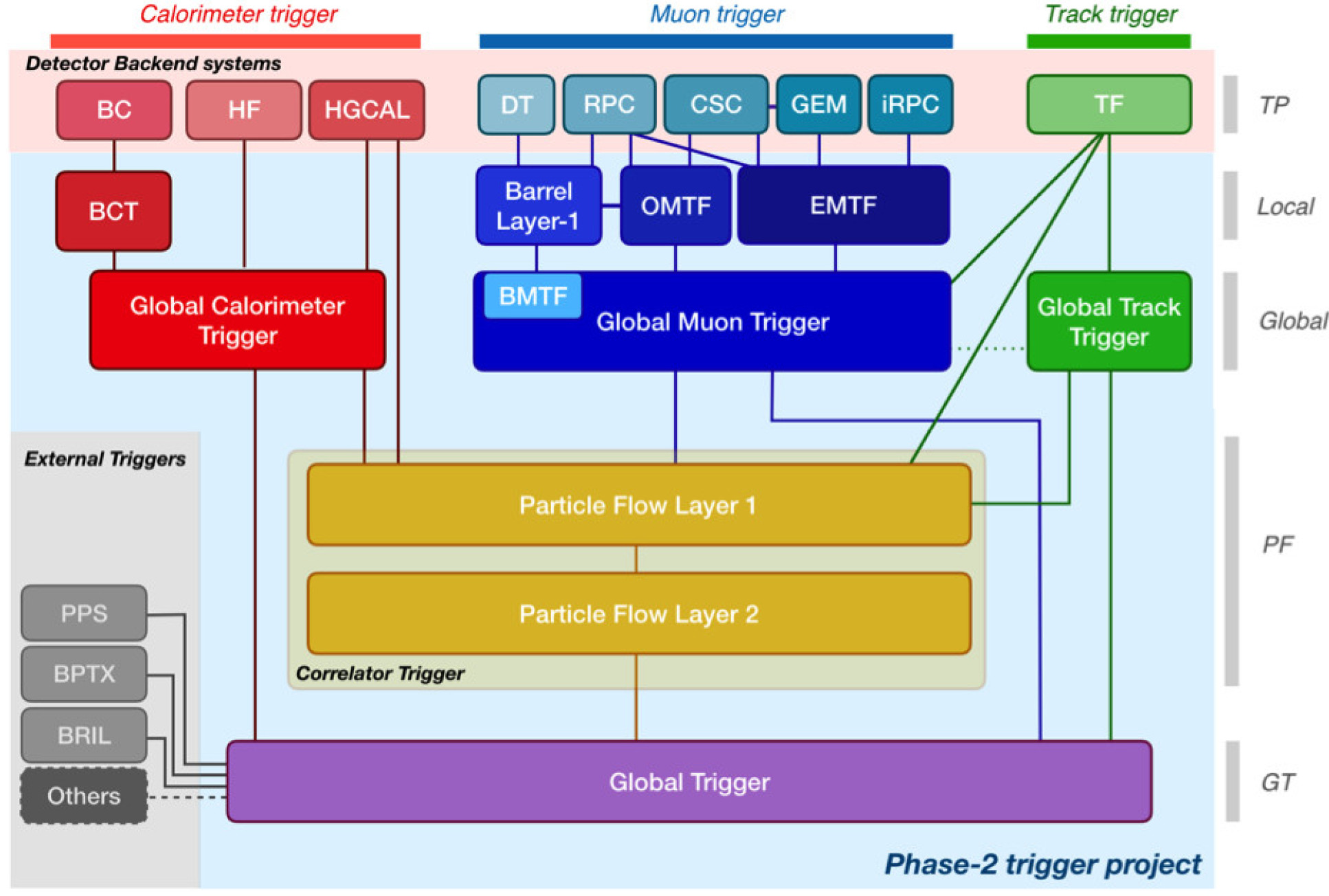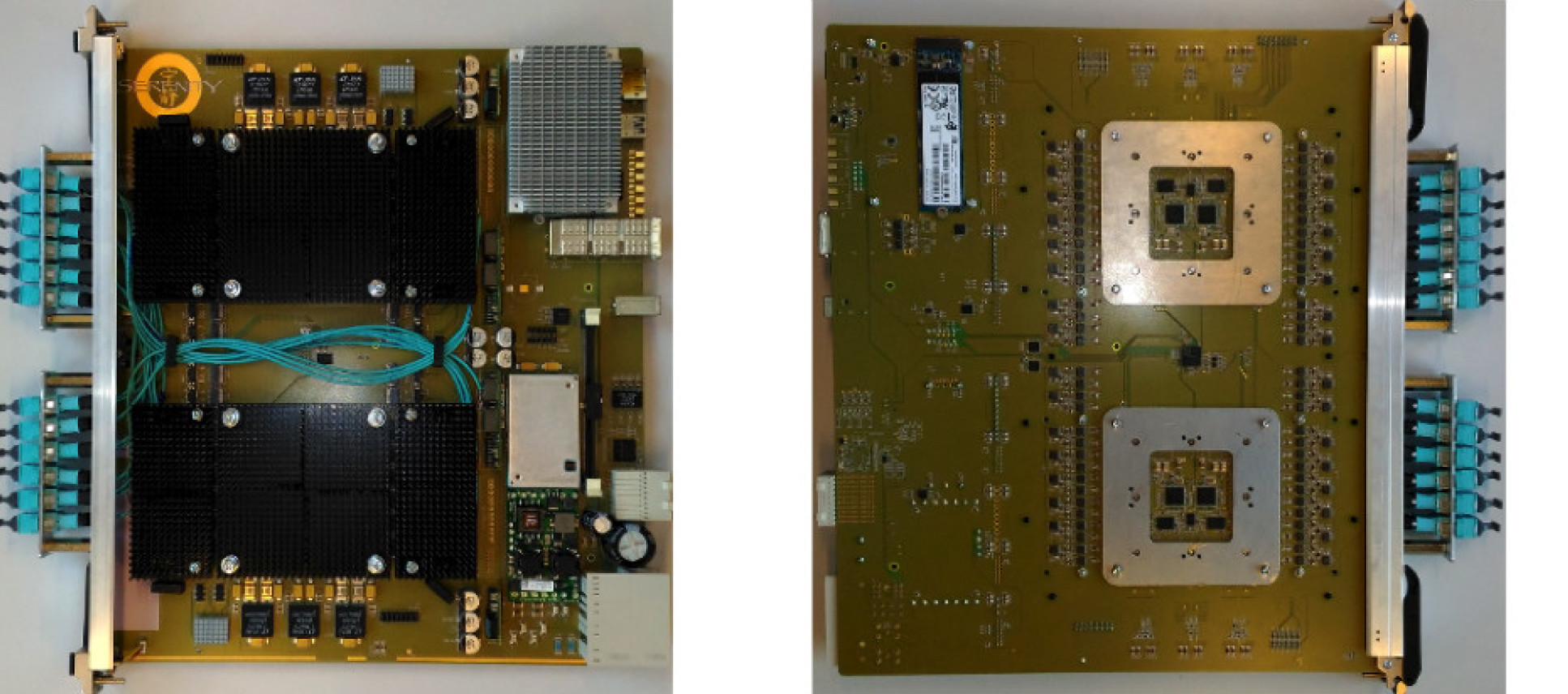CMS Trigger Upgrade
To maximise the potential of the LHC, the accelerator will require a series of upgrades so that it can reach its ultimate luminosity and deliver a total 3000 fb-1 of integrated luminosity in its lifetime. The high-luminosity (HL-LHC) conditions will however have serious implications for the CMS detector, requiring the replacement of the tracker and endcap calorimeter and leading to much higher occupancy in the detectors. To adapt to the new detectors and fully exploit the increased luminosity the CMS trigger will also require an upgrade. The Level-1 Trigger system will for the first time include information from the silicon tracker and also high-granularity calorimeter data.
To adapt to the new detectors and the higher luminosity the maximum Level-1 trigger rate will increase from 100 kHz to 750 kHz and the available latency from 3.8 μs to 12.5 μs. Overall the trigger is specified to be able to process up to 60 Tb/s. The design of the trigger system is illustrated in the diagram below. It is composed of over 200 processing units partitioned spatially and in time as appropriate. It will provide robust independent triggers for calorimeter, muon and tracking systems separately, and a Particle Flow trigger, which combines detector information, all feeding into a global trigger.

The Serenity project
The new Level-1 trigger (and other areas of the CMS upgrade) will be implemented using electronics based on the advanced telecommunications standard (ATCA) with high I/O generic processing boards.
The Serenity collaboration was set up to develop the technlogy required and to produce and test a wide range of prototypes. The Serenity is an ATCA carrier board with two sites for daughter cards, which are intended to carry large, state-of-the-art Field Programmable Gate Arrays (FPGAs). The cards send and receive data via optical links running at up to 28 Gb/s.
